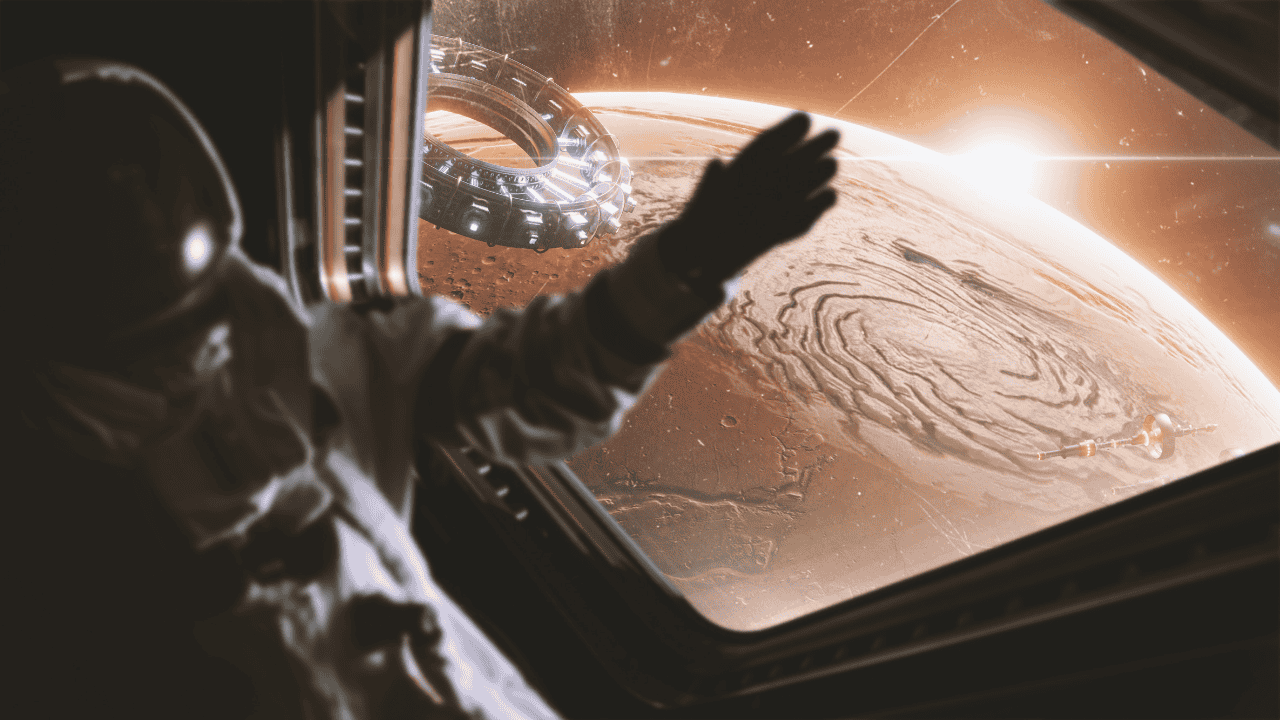NASA has everyone on alert again—and this time, it’s not about a new rocket test or lunar mission. In late June 2025, astronomers using NASA’s Asteroid Terrestrial-impact Last Alert System (ATLAS) spotted something that defies easy explanation: a mysterious object, nicknamed A11pl3Z, barreling toward our solar system at a staggering 245,000 kilometers per hour.
What Exactly Is A11pl3Z?
The object was first picked up by ATLAS telescopes on June 25, 2025, as part of NASA’s routine near-Earth object (NEO) surveillance. At first glance, it looked like another comet. But that theory didn’t hold for long.
Unlike traditional comets, which follow curved or elliptical orbits under the Sun’s gravitational pull, A11pl3Z’s path is nearly a straight line—what astronomers call a hyperbolic trajectory. Translation: it’s not from here, and it’s not staying. This thing is just passing through our cosmic neighborhood, and fast.
If confirmed, A11pl3Z would join an exclusive club of known interstellar visitors—objects that originated outside our solar system and zipped in for a quick, once-in-history visit. The first was ʻOumuamua, discovered in 2017, followed by 2I/Borisov in 2019.
How Big and How Fast?
Initial size estimates put A11pl3Z somewhere between 10 and 20 kilometers wide, making it possibly the third-largest interstellar object ever observed.
To put that in perspective:
- It’s roughly twice the size of Mount Everest.
- It’s moving about five times faster than a typical asteroid in the asteroid belt.
| Metric | Estimate | Comparison |
|---|---|---|
| Speed | 245,000 km/h | ~68 km/second (5x faster than a near-Earth asteroid) |
| Diameter | 10–20 km | Roughly the size of a small city |
| Type | Unknown | Possibly a comet or rocky interstellar body |
| Closest Approach | December 2025 | Passes near Earth’s orbit, but on the far side of the Sun |
NASA’s orbital simulations confirm no collision threat to Earth—by the time A11pl3Z reaches its closest point to the Sun and Earth in December, our planet will be on the opposite side of its orbit.
Why It’s So Strange
Here’s the kicker: it doesn’t have a coma (the glowing gas cloud) or a tail, which are telltale signs of a comet heating up.
“Everything about this object is peculiar,” said ESA planetary defense officer Richard Moissl, in a preliminary statement. “It doesn’t match any profile we have for known asteroids or comets. It’s fast, it’s large, and it’s not behaving according to solar gravitational norms.”
Some scientists have speculated it could be a carbon-rich asteroid, a dormant comet, or even debris from another solar system’s formation. Others have cautiously noted that its speed and trajectory resemble a class of unbound interstellar objects—space travelers that wander the galaxy untethered to any star.
What NASA and ESA Are Doing Now
The discovery has set off a global observing campaign. NASA’s James Webb Space Telescope, the Vera C. Rubin Observatory, and the European Space Agency’s Gaia mission are all gathering data on its brightness, rotation, and chemical composition.
Astronomers want to determine whether it’s reflecting sunlight like rock or emitting gases like ice. That difference could help confirm whether A11pl3Z is more asteroid-like or comet-like—or something entirely new.
You can track official mission updates on NASA’s Near-Earth Object Program site and ESA’s Space Situational Awareness page.
Interstellar Visitors: A Rare Phenomenon
Before A11pl3Z, only two interstellar travelers had ever been confirmed:
| Name | Year Discovered | Notable Traits |
|---|---|---|
| ʻOumuamua | 2017 | Cigar-shaped, unusual acceleration pattern |
| 2I/Borisov | 2019 | First confirmed interstellar comet with visible tail |
| A11pl3Z | 2025 (pending confirmation) | Extremely large, no tail, hyperbolic path |
Each time one appears, it sends the astronomy world into a frenzy—because these objects carry chemical and structural fingerprints from entirely different star systems. Studying them is like getting a piece of another galaxy delivered to our doorstep.
Could It Tell Us Something About Life?
Possibly. Interstellar objects may carry organic molecules or ice compounds forged in the early days of other solar systems. If A11pl3Z contains these materials, it could help scientists understand how ingredients for life travel across the galaxy—a process called panspermia.
As NASA astronomer Mark Norris noted, “Every time we spot one of these visitors, we’re essentially opening a message from another star system. The more we learn, the closer we get to understanding how life spreads through the universe.”
What Happens Next
A11pl3Z is expected to pass closest to Mars in October and reach its perihelion (closest point to the Sun) in December 2025 before exiting the solar system forever. Scientists estimate it’ll remain visible to advanced telescopes until early 2026.
NASA is also considering whether a probe flyby mission could be feasible—though the window is extremely short given the object’s velocity.
FAQs
What is A11pl3Z?
Roughly 245,000 kilometers per hour (about 152,000 mph).
How fast is it moving?
A fast-moving interstellar object detected by NASA’s ATLAS telescope in June 2025.
Will it hit Earth?
No. NASA confirms there is zero risk of collision; it will pass safely in December.
Is it a comet or asteroid?
Not confirmed yet—it shows no comet tail and behaves unlike known asteroids.
Why does it matter?
Studying interstellar visitors like A11pl3Z helps scientists understand how planetary systems form and whether life’s building blocks travel between stars.



















